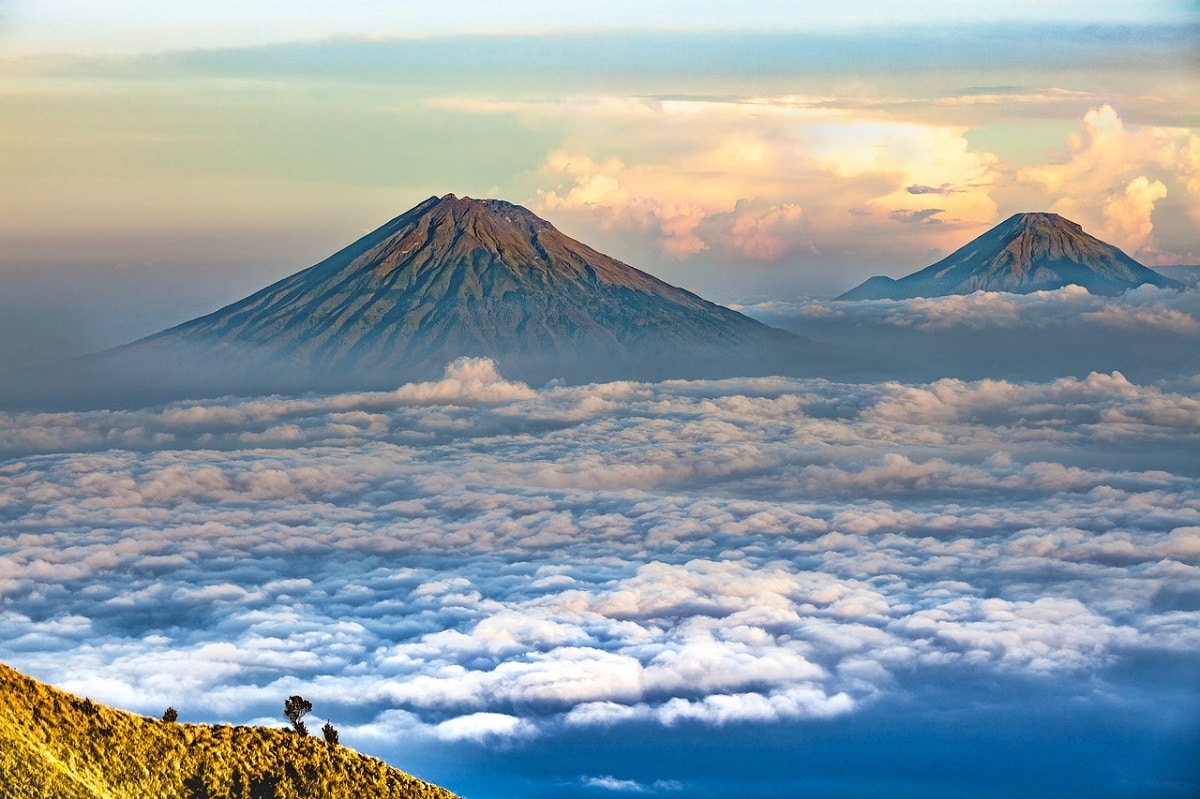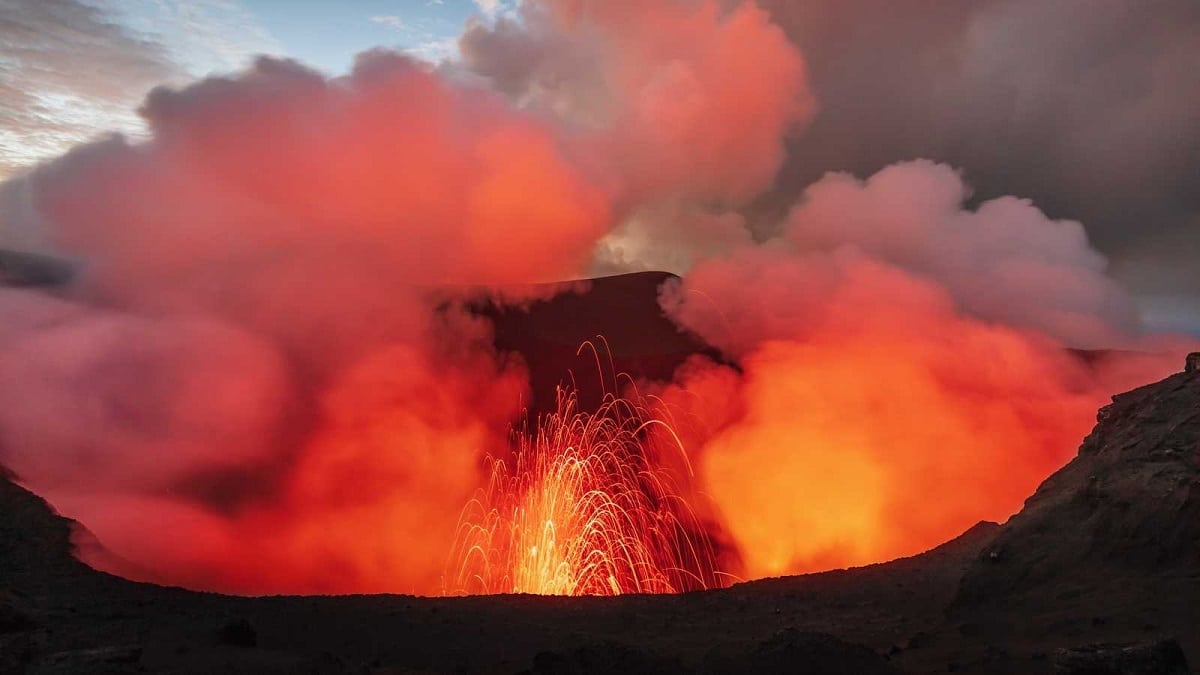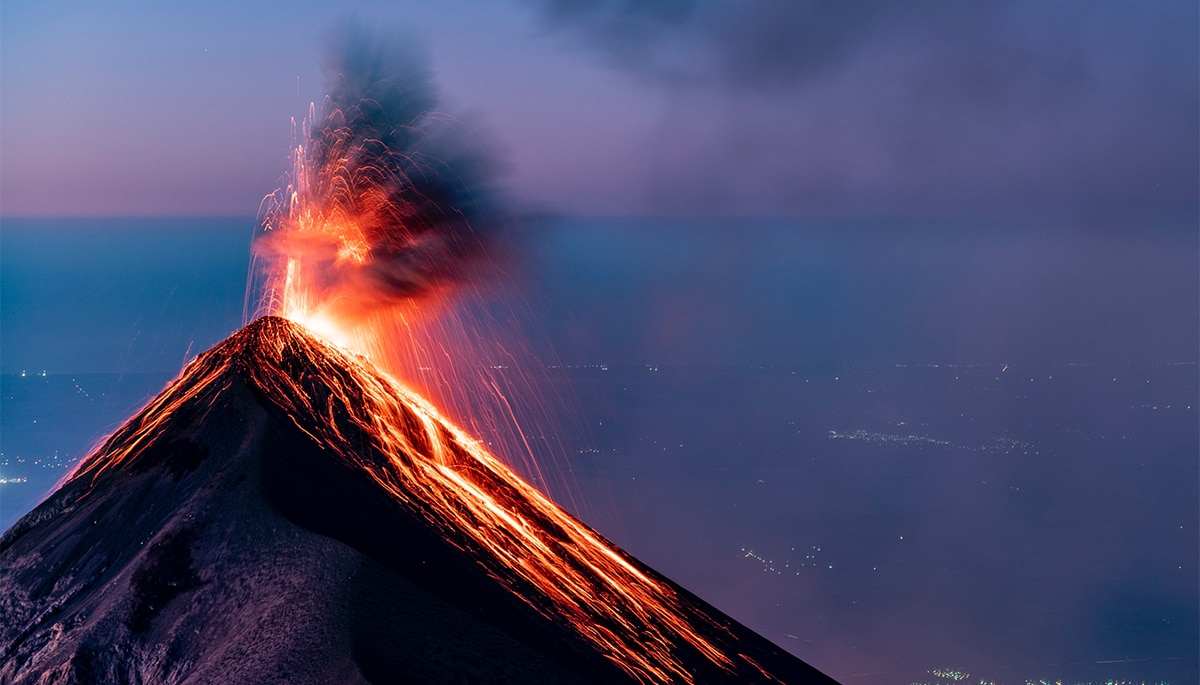
The volcanoes are impressive and leave many curiosities to know. There are numerous curiosities of the volcanoes that people wonder. The eruption of a volcano is very common, more than you might believe. At this time, some volcano on the planet will be in that phase, although it is not known since most of these eruptions occur underground.
For this reason, we are going to dedicate this article to telling you what the main curiosities of volcanoes and their characteristics are.
what are volcanoes

Before talking about the peculiarities of these geological formations, we will briefly explain how they were formed. Magma pressure within the solid crust sometimes manages to lift the soil, creating a chimney that leads to the crater.
As the magma spreads around the crater, material accumulated from previous eruptions and pressure from the magma chamber itself form a cone-shaped mountain called a volcano. This opening in the earth's crust can sometimes give rise to eruptions, which vary in intensity, duration and frequency from one volcano to another.
Once this information is known, we are going to discover some of the most interesting curiosities that these formations offer.
Curiosities of the volcanoes

Earth is not the only planet with volcanoes
The existence of these magma-laden mountains is not limited to our planet. Other giants in the solar system also have volcanoes, which are surprisingly active and erupt frequently. Among our neighboring volcanic planets are Jupiter, Saturn and Neptune.
Volcanoes as a source of electricity
One of the lesser known facts about volcanoes is that they represent a very useful source of energy called geothermal heat. The electricity generation process is as follows: cold water is pumped into the rocks of the volcano, heating it up and turning it into steam. Later, the steam is directed to the power plant responsible for generating electricity.
This type of energy has grown substantially since 2013, starting with regions such as Iceland or Rwanda and Congo, where Lake Kivu is on its border. The arrival of geothermal power plants in Rwanda, allowing electricity to reach more homes, is a very important development.
The largest volcano in the world
Mauna Loa in Hawaii is considered the largest volcano in the world, both in volume and area. This can be seen in its name, which means "long mountain" in Hawaiian. The volcano is 4.200 meters above sea level, but if we look at the bottom of the sea, it will be longer.
Mauna Loa is located 5.000 meters under the sea, and since its history of eruptions began, its total height has been 17.170 meters. But we are sorry to tell you that this Hawaiian volcano is not the largest volcano in the solar system. In this sense, Mount Olympus stands out on Mars with a height of 22.500 meters.
Volcanic eruptions affecting the entire world
If there is a volcanic eruption that is remembered today, it is that of Mount Pinatubo in the Philippines in 1991. After 500 years of inactivity, the volcano has come to life and is in poor condition. Its eruption killed hundreds and caused devastation that took years to overcome.
In addition, the activity of this volcano has affected the whole world since the temperature has dropped a few degrees. Fortunately, surveillance and evacuation efforts kept the death toll low.
shocking sound
The last little-known anecdote is that volcanoes can also emit sounds. When these formations erupt, plummeting explosions can produce sounds that can be heard thousands of miles away.
That's the 200-megaton explosion that occurred in 1883 at a volcano on Krakatau Island between Java and Sumatra. Let everyone have an idea of the power of the explosion. You should know that its power is 10.000 times greater than that of the Hiroshima atomic bomb. The power can make the explosion sound more than 5.000 kilometers away, and some islands in the Indian Ocean. There is no better data to confirm that the power of volcanoes is immeasurable and can extend to the entire world. This is what Mount Agung in Bali (Indonesia) now shows again.
Other curiosities of volcanoes

- Volcanic eruptions can launch ash up to 30 kilometers into the air.
- The temperature inside the volcano can reach 1.000 degrees, but the lava can reach 12.000 degrees by the time it reaches the surface.
- There are about 10 to 20 volcanic eruptions every day on Earth.
- There are about 1.500 active volcanoes around the planet, most of them under the sea.
- Italy is the country with the most active volcanoes in Europe, with 14.
- The only rock in the world that can float on water is volcanic rock, known as pumice stone.
- Large volcanic eruptions can reflect solar radiation, cooling the Earth by several degrees.
- There is an area in the Pacific Ocean known as the Ring of Fire because most of the volcanoes on Earth are concentrated there.
- The soil in the area near the volcano is very fertile, so some people build houses next to the volcano.
- Volcanoes take hundreds of years to form, which is a very slow process.
- Volcanoes can become extinct if time passes, they cool down and are no longer active, but there can be dormant volcanoes that are extinct but may erupt in the future.
- The area of the Earth where we can find more volcanoes is in Indonesia.
- Volcanic rocks can float, the only ones in the world that can float. These are pumice stones, which are gray in color and filled with holes created by the hot gases present in the lava.
- The highest volcano is Ojos del Salado, at almost 7.000 meters above sea level, between Argentina and Chile.
- The crater is called a caldera and is made of magma.
- Lava is magma, which consists of lava and various solid and volatile compounds from the Earth's surface. In addition, in lava we can find gases and crystals in suspension.
- The temperature of the lava can reach 1000 degrees Celsius.
- The land near the volcano is very fertile, so people live next to the volcano.
- Italy is the country with the most active volcanoes in Europe, with a total of fourteen.
- There are about 1.500 active volcanoes in the world, most of them under the sea.
- Volcanic eruptions can throw ash up to 30 kilometers into the air.
- On Earth, there are 10 to 20 eruptions per day.
I hope that with this information you can learn more about the curiosities of volcanoes and their characteristics.